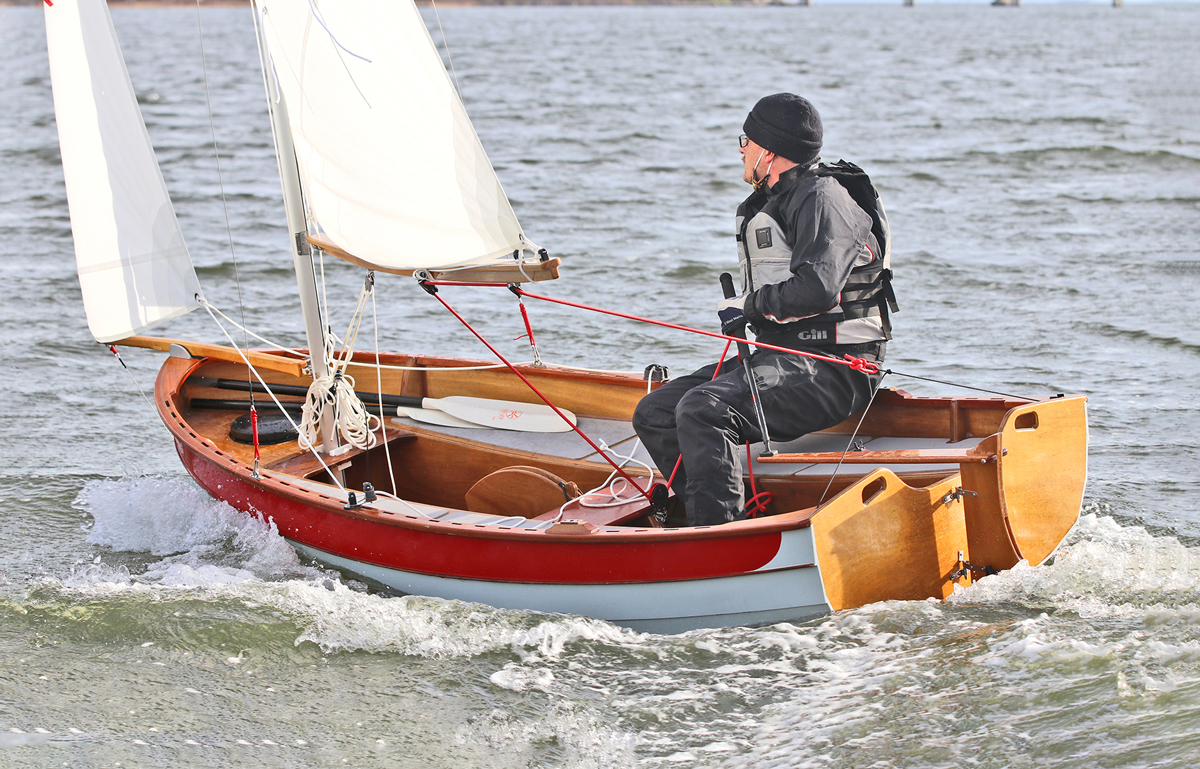In a balanced lug, excessive twist is controlable by means of the downhaul. I set our Passagemaker up to make this a two-part downhaul to get adequate tension. In our setup, the sheet comes down from the middle of the boom to just aft of the daggerboard, with the lower block (it is also two-part) attached to a very short bridle worked into two holes in the after edge of the midship thward. (This is so there isn't anything hard under the oarsman's behind when the rig is dropped for rowing.)
Here's a link to a photo showing the general arrangement:
https://www.dropbox.com/scl/fi/a3t7qvkv864avg1pifzir/462_K30b2214a.jpg?rlkey=jzmpnso0n0xnnuz9245le2nmz&dl=0
...which is worth more than the couple of thousand words I'd write trying to explain it.
Anyway, my point is that the way the balanced lug contols twist with the downhaul makes sheeting the sail to the centerline like this possible. If this was a standing lug (one with the tack of the sail at the mast), on a boom without an effective boom vang, this wouldn't work at all. Easing the sheet would allow the boom to rise and the top of the sail to twist off unacceptably.
If sheeting over the stern, it's much the same except the bridle can be longer, and there is some point to having the little block or whatever the sheet runs through at the lower end have a bit of room to slide from side to side. As long as it's all done with rope and knots, you can try different arrangements to see what works best for you.
I used to have a Sea Pear 21 cat ketch with a freestanding jib-headed rig with the booms rigged with very effective, multiple part boom vangs. Both sails were sheeted quite effectively to hard points on the centerline with no bridles or travellers involved, sail twist being controlled by the boom vangs.
Hope that helps....
.....Michael
P.S. The problem with sheeting the little balanced lug to the centerline as I've done is that one must let go of the sheet briefly to change hands on the tiller. Rigging the sheet with the fall coming down at the stern would allow the sheet to be gripped with the tiller hand to free the other hand for...whatever: changing hands in tacking, getting a drink of water, eating a sandwich, etc. I've been thinking about rerigging things this way, but I love the way the central sheet controls the sail with fewer parts, less line to get foul of something, and nothing overhead along the boom waiting to snatch my hat off or cast a half hitch around my neck if I don't tend the sheet smartly in a gybe. <;-)
